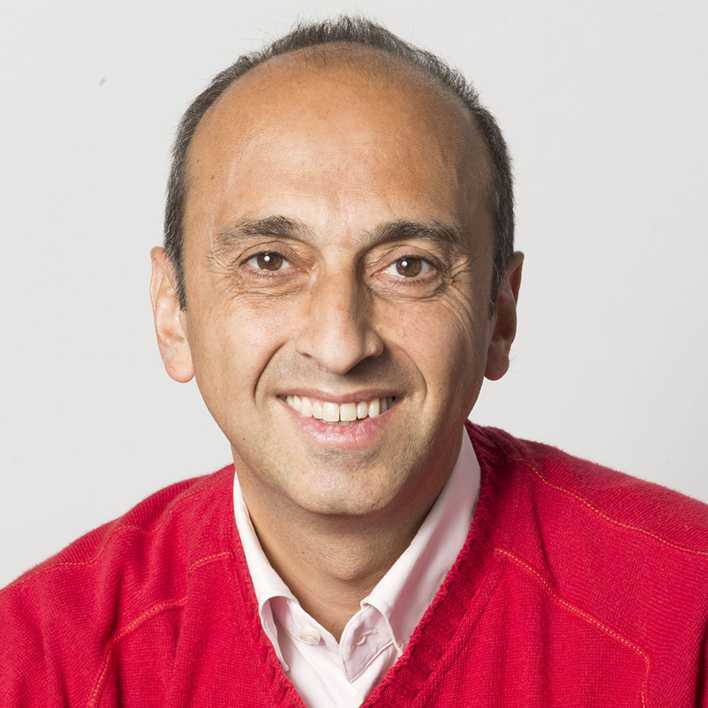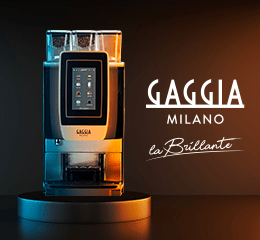MILAN – The following article is an edited transcript of a lecture on coffee roasting held by Dr. Chahan Yeretzian, Professor for Analytical Chemistry, Bioanalytical Chemistry and Diagnostics at ZHAW’s School of Life Sciences in Wädenswil (Switzerland), in the occasion of the Coffee Hub organised by Ima at its headquarter in Bologna in May this year.
The second part of the article will be published in tomorrow’s issue of Comunicaffè international.
by Dr. Chahan Yeretzian
I’m the head in Zurig of two groups. One is technologist, and I’m a professor of chemistry at the University. But besides that there was opened ten years ago, a coffee excellence center. Which is dedicated to the research of this product. That’s our activity.
Besides that we’ve also a post craft degrees in the science of coffee, where we teach to the students. In those many years I’ve become quite active in the specialty coffee. And in general in coffee research: that’s my focus.
My work lead me to collaborate with Nestlé.
During our study we hadn’t just focused only on roasting or packaging, or sustainability. The purpose is to see all the value chain. That’s because if a company wants to understand the real needs you have to know what you’re doing in the all value chain.
One of the major issue that we’re facing is that as a scientist we use a language that is different from the industry one. We have to give a proper translation.
When we talk about roasting, we talk about chemical compounds. And when we confront with roasters, they often don’t understand why in this process is really happening. We have different ways of looking at things. But in the end we have to find a common language in order to implement and to work together with the future.
Today I actually want to talk about roasting, but also extending this theme to the packaging. Because roasting a great coffee it’s only a part to maintain the quality and to extend it into time. And to preserve quality, one of the elements is absolutely the package.
When we talked to people on roasting, they observe roast curve with thermometer, but sometimes they even don’t know where it is in the machine. So they measure the curves on these bases. And they predict all kind of sensory properties.
There’re different types to make sense for the different chemical transformations. But it’s always an attempt to have an interpretation about those many processes.
We have a lot of understanding in research of the curve.
We have physical transformation: the coffee becomes extractible, it changes side, color, the weight.
But there also chemical transformation: there’s aroma change and de-gasformation. That’s a very critical and we will talk when we speak about packaging. Degassing many implications in the process of roasting and so it’s essential to learn how to measure it and establish it. And that’s important also for the content of polyphenols.
First of all technology
You have to bring your bean with different techniques and you can keep or you can reduce the reaction. You have the condition before and the cooling. The cooling is always present in the process, but there’s a lot to study on this part. I consider that the core of roasting.
As a roaster, you have also to understand implications up stream and how coffee that has been fermented or decaffeinated or harvest in a specific way, effects in the roasting.
And you’ll have also some implications down stream. For example it will have impact on the degas, on the way of the extraction and on the cup sensory profile. You have to understand how up stream processing will impact on what you do and how you will effect the continuation.
As a roaster you’re the center of processing and so you have to understand all these implications.
There’re different water projects that we studied. For example how does post harvesting could influence the water activity. There’s also a lot of projects on roast profiles: on how can you change roasting by specific projectories (fast or slow) to create a different sensory profile. It could be very interesting to create exactly the profile desired by customers. But to do that you have to select the green beans and work as a roaster to achieve that specific result. This is where we’re going.
The water activity
It’s an important theme related to roasting. It’s more connected to mole formation and the reduction of the shelf life. When you buy coffee all the intentions must focus on the specific water activity or humidity. 10/12% of washed content and water content of 0. 55.
Here is a measurement from crudes, of water activity of the green bean: all specialty coffee grades. They end up to average water activity of the coffee coming in is 0.55 and it has a spread of about 0.65. So is in this range, the water activity of the green bean coping in.
The fundamental implication here, is that water activity is very important for roasting because it’s a key element in the minor reactions. And in aroma production.
We all have to go to the receipt not for aroma, but from storage stability. The 11% are not the optim water activity for roasting. Nevertheless everybody buys this 11%, they put it in the roaster machine, and we often do a sub optim roasting in terms of water activity.
When you buy green coffee, the range is 0.55. But you have to consider that when you put it into the roaster, that starts heating it, the coffee dries before it treats the minor office???
How can I understand what’s the optimum water activity for the reaction?
The only way you can exploy that, is to actually all farm roasting. I actually roast directly into the farm. You don’t try on the 11%. So we’re trying to explore that. This is a theory. We play with the green bean and the humidity. We measure for different water activity for the aroma compounds in the roasted coffee. You see that’s a strong dependence from water activity that impacts strongly the formation of aroma. If you look that some compounds increase if you do the same with water activity and viceversa.
When you roast a single bean is the same thing as you roast an entire bench? And how can you understand that?
I’d like to show the technologies in analyzing roasting. The question is: when you roast a single bean, what is happening and how much warm can generate it? When you have green coffee we call all the compounds in the green coffee that recourse. And you end up in the roasting: there is a range of molecules that we have to know because they contribute to create aroma profile.
The coffee aroma is the result molecules generated during the roasting
The different processes may create minor aminoacids, sugars and determine a specific product.
The question is: how are they generated? How do we achieve that?
I show you a very simple experiment. It’s a single bean and we make a small hole in to this bean and we put in there a small tube. Then we put it into a small roaster that we’ve built. We collect the aroma compounds through the very small tube. We could see in a high resolution how the aroma compounds generated inside or outside the bean.
And we can look during the time. We actually understand where the 4 molecules are from. And we can notice that is a sequence in the chemistry process through this tool in a very detailed way.
And the same chemistry reaction happens if you roast a bench. There are the same compounds. And they come sequentially just as it happens in the single bean. The single bean is only easier because there’s no disturbance and on the contrary, when you roast an entire bench you can have some turbolences from the roaster.
The conclusion here is that we can look at the entire process of creating aroma compounds through our tools and so we can control the roasting basing our choices on the flavor composition and we can predict what will be the future roasted profile.
The contaminants
They are an issue very discussed recently: people now are talking about furan or acrylamide or other compounds. But this is actually something unavoidable. Because whenever you roast something you’ll have compounds generation that are negative if you look them on the individual.
The issue there is that coffee as a complete product, has never shown to have this negative reputation for furan and acrylamide: so people look at these components and they say “ok, since there’s furan in the coffee so I can’t drink it”. But coffee, as a complete product has never shown this, it’s only reputation and it’s the contrary.














